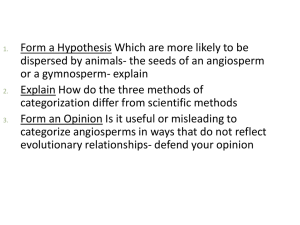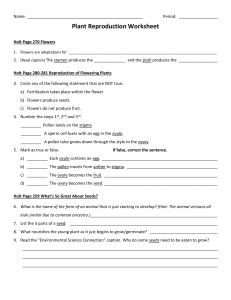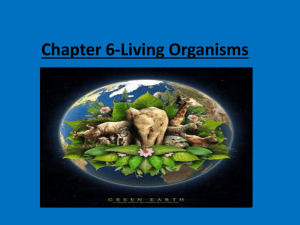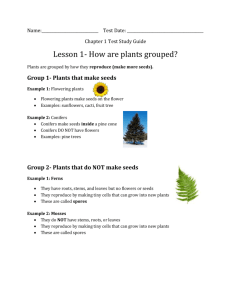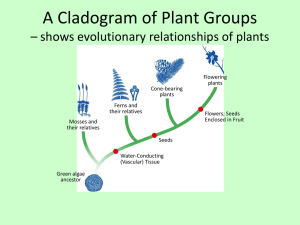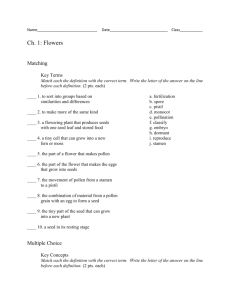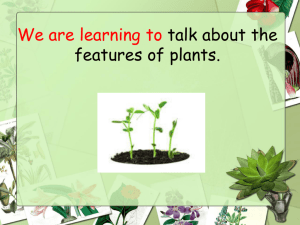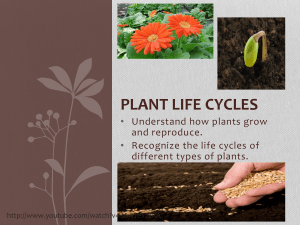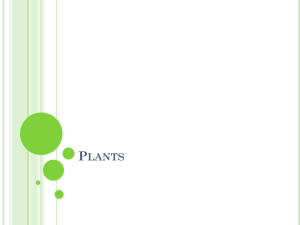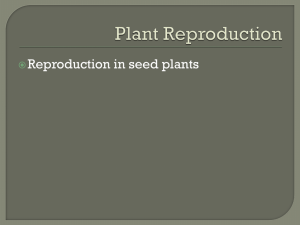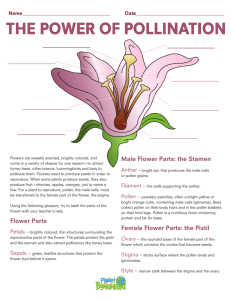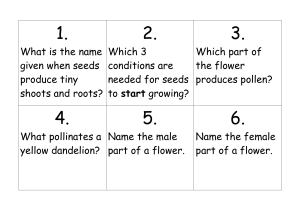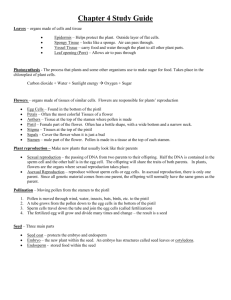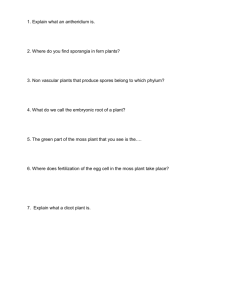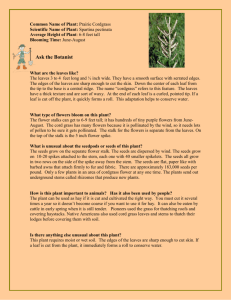Plant Reproduction
advertisement
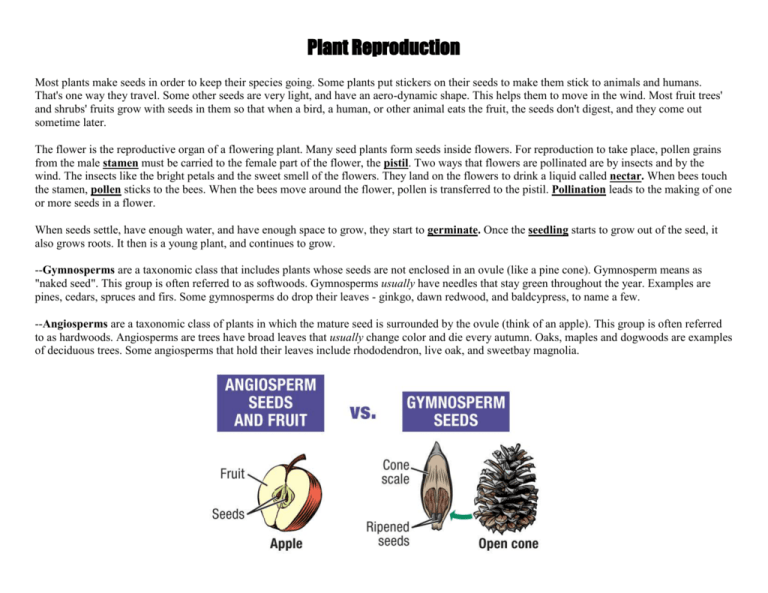
Plant Reproduction Most plants make seeds in order to keep their species going. Some plants put stickers on their seeds to make them stick to animals and humans. That's one way they travel. Some other seeds are very light, and have an aero-dynamic shape. This helps them to move in the wind. Most fruit trees' and shrubs' fruits grow with seeds in them so that when a bird, a human, or other animal eats the fruit, the seeds don't digest, and they come out sometime later. The flower is the reproductive organ of a flowering plant. Many seed plants form seeds inside flowers. For reproduction to take place, pollen grains from the male stamen must be carried to the female part of the flower, the pistil. Two ways that flowers are pollinated are by insects and by the wind. The insects like the bright petals and the sweet smell of the flowers. They land on the flowers to drink a liquid called nectar. When bees touch the stamen, pollen sticks to the bees. When the bees move around the flower, pollen is transferred to the pistil. Pollination leads to the making of one or more seeds in a flower. When seeds settle, have enough water, and have enough space to grow, they start to germinate. Once the seedling starts to grow out of the seed, it also grows roots. It then is a young plant, and continues to grow. --Gymnosperms are a taxonomic class that includes plants whose seeds are not enclosed in an ovule (like a pine cone). Gymnosperm means as "naked seed". This group is often referred to as softwoods. Gymnosperms usually have needles that stay green throughout the year. Examples are pines, cedars, spruces and firs. Some gymnosperms do drop their leaves - ginkgo, dawn redwood, and baldcypress, to name a few. --Angiosperms are a taxonomic class of plants in which the mature seed is surrounded by the ovule (think of an apple). This group is often referred to as hardwoods. Angiosperms are trees have broad leaves that usually change color and die every autumn. Oaks, maples and dogwoods are examples of deciduous trees. Some angiosperms that hold their leaves include rhododendron, live oak, and sweetbay magnolia.
